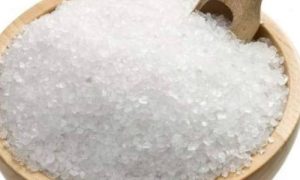Sugar, Ethanol Price Hikes Key As UP SAP Raises Production Cost

Uttar Pradesh’s hike of sugarcane SAP to Rs 400 per quintal will raise production costs for mills by about 8%, pressuring profits unless sugar and ethanol prices increase. Sugar output is expected to rise, possibly creating surplus. Ethanol margins remain tight as key ethanol prices have not been revised in two years.
India Ratings and Research (Ind-Ra) has said that the Uttar Pradesh government’s decision to raise the state advised price (SAP) of sugarcane by Rs 30 per quintal for the 2025-26 sugar season (SS26) is likely to push production costs of the state’s sugar mills higher by around 8 per cent, creating pressure on profitability unless sugar and ethanol prices rise.
The move, which lifts SAP to Rs 400 per quintal, follows a two-year freeze and is expected to increase production costs by Rs 2.5–3 per kg for mills in Uttar Pradesh, which account for 35–40 per cent of India’s total sugar output. The impact will become visible from the fourth quarter of FY26 as older inventory is exhausted.
“While a likely improvement in sugar recovery and production would support the revenue in SS26, it may not be sufficient to offset the impact of the increase in SAP on profitability. As a result, an increase in sugar and ethanol prices is imperative for the maintenance of EBITDA margins,” said Khushbu Lakhotia, Director, Corporate Ratings, Ind-Ra.
While the Fair and Remunerative Price (FRP) for other major sugar-producing states such as Maharashtra and Karnataka was raised by 4.4 per cent to Rs 355 per quintal, Uttar Pradesh’s larger hike is expected to have a more pronounced effect on overall production costs.
Higher Output Expected But Surplus Looms
Ind-Ra expects India’s gross sugar production to rise to 34–34.5 million tonnes in SS26, compared to 29.5 million tonnes last year, aided by improved cane quality and recovery rates following better rainfall and varietal replacements. However, this increase could create an exportable surplus of around 2 million tonnes, especially if ethanol diversion remains limited.
While the government has permitted up to 5 million tonnes of sugar diversion towards ethanol in SS26, Ind-Ra estimates the actual diversion will be around 3.5 million tonnes, in line with the ethanol allocation of 2.9 billion litres through cane-based feedstock. Domestic sugar consumption is expected to remain steady at 28.5 million tonnes.
The agency said any decision by the government to allow higher export quotas will be critical in managing the likely production surplus and maintaining domestic price stability. Sugar prices, which averaged around Rs 40 per kg in 2025, are expected to remain firm but may see limited upside given the anticipated surplus.
Ethanol Segment Faces Pricing Pressure
The report said that while sugar prices have kept pace with rising costs, ethanol prices have remained unchanged for two years for key feedstocks such as juice and B-heavy molasses, squeezing margins in that segment. Only C-heavy molasses-based ethanol prices have been raised, but this feedstock accounts for just 1 per cent of ethanol allocations.
“The government is yet to announce the ethanol prices for ESY26, but given the increase in cane costs, lack of a commensurate increase of mid-to-high single digit would affect the segment’s EBITDA,” the report said.
India is already close to achieving its 20 per cent ethanol blending target, with a blending rate of 19.2 per cent as of September 2025. However, the absence of a new roadmap for higher blending rates could limit growth in ethanol demand, leading to temporary oversupply.
The latest tender for ESY26 saw oil marketing companies receive bids for 17.8 billion litres of ethanol—70 per cent higher than the required quantity of 10.5 billion litres—signalling potential oversupply. Allocation to cane-based ethanol fell by 6 per cent year-on-year, while grain-based plants, particularly those using maize and Food Corporation of India rice, received larger shares.
Ind-Ra said the credit profiles of larger, well-rated companies remain stable, supported by strong liquidity, but smaller mills could face financial stress if ethanol and sugar prices are not revised upward.
To Read more about Sugar Industry continue reading Agriinsite.com
Source : Business World
















